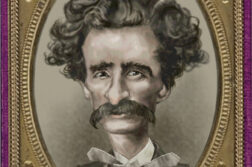THE DAY AFTER I gave this talk to the Harvard gay and lesbian alumni/æ group, I was taken to lunch in Dunster House by some undergraduates. After filling our trays on the serving line, we all sat down together at what was evidently a “gay table.” As the older, visiting gay writer I felt strangely uncomfortable: I didn’t know if I was to talk with my hosts about gay subjects or converse generally—what was our bond, after all? Even worse, I kept thinking of that scene in the movie Animal House where the rejects at the fraternity party are told to sit on the same sofa, where they huddle together like so many convicted criminals—as a fly crawls across someone’s turban. Is this good, I wondered, this segregation, this gay table? Wasn’t it better when a student belongs to the common culture? Could identity politics be a mistake?
Other questions raised in the speech below seem to me ten years later just as perplexing—for instance, the matter of the six crises Erik Erikson taught were part of the human life cycle (“intimacy”—with a member of the opposite sex—being one I flunked, preventing me from moving on to “generativity,” i.e., parenthood). Many of us did not have children because we felt we could not be honest with a wife about our real sexual desires. Now gay couples have finessed this issue altogether. The right to marry, the adoption of children, seem like a determination to recreate heterosexual family life. Is this the answer to Erikson’s crisis of generativity? Or merely what Santayana, in his essay on the New Haven YMCA, claimed was a powerful urge in American culture: the desire to conform?
Which brings me to another point: the idea that gay people should be allowed to try, in the free marketplace of ideas, whatever means they choose to pursue happiness, so that we can see which ones work and which do not. I used to think the point of coming out, of creating a gay culture, was to humanize relations between gay people, which seemed and still seem awfully harsh at times. But even now, after AIDS and Matthew Shepard, the Texas sodomy ruling and Will & Grace, gay novels, gay films, and gay tables at universities, I wonder: Just what is there in the space between two gay people who meet today? The same old same old, or something new? Ten years after this speech, gay life seems to me at times adamantly unchanged (drugs, sex, the gym, and promiscuity), and at other times virtually unrecognizable—evaporated, almost, into assimilation and cyberspace.
So why—the question I asked ten years ago—did we make so much of our homosexuality? To make things better for all of us, I presume; even if it appears that some things between us cannot be changed. Does that gay table at Dunster House still exist? I do not know. Here, at least, is a picture of the way things were long before that.
— Washington, October 2003
__________________________________________






